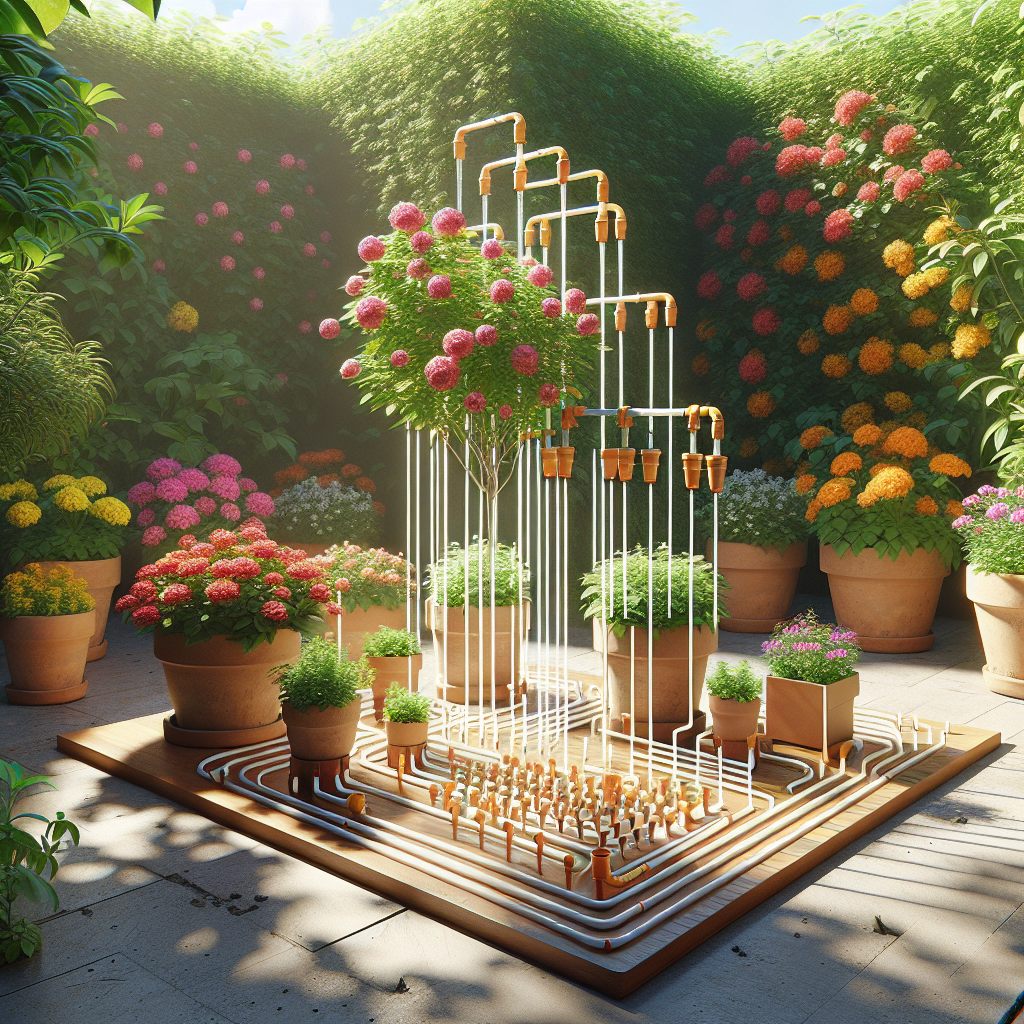Making Gardening Easier with a Slow Drip System for Pots
Gardening is a rewarding and fulfilling hobby, but it can also be time-consuming and labor-intensive. One of the biggest challenges gardeners face is ensuring that their plants receive the right amount of water. Overwatering or underwatering can be detrimental to plant health, leading to stunted growth or even death. However, with the advent of slow drip systems for pots, gardening has become much easier and more efficient.
Traditionally, watering potted plants involves manually pouring water into each pot, which can be time-consuming and inconsistent. With a slow drip system, however, the process becomes automated and controlled. These systems consist of small tubes or pipes that deliver a slow and steady stream of water directly to the roots of the plants.
One of the main advantages of using a slow drip system for pots is water conservation. These systems are designed to deliver water only where it is needed – at the plant’s root zone – minimizing waste. Unlike traditional watering methods that may result in excessive runoff or evaporation, slow drip systems ensure that every drop counts.
Another benefit of using a slow drip system is that it promotes healthier plant growth. By delivering water directly to the roots, these systems help plants develop stronger root systems. This leads to improved nutrient uptake and overall plant vigor. The controlled release of water also prevents soil from becoming oversaturated, reducing the risk of root rot or other moisture-related issues.
Slow drip systems also make gardening more convenient for busy individuals or frequent travelers. Once set up, these systems require minimal maintenance and allow gardeners to leave their plants unattended for extended periods without worrying about them being either over- or underwatered. This convenience allows gardeners to enjoy their hobby without being tied down by daily watering tasks.
Setting up a slow drip system for pots is relatively simple and requires only a few basic components. The first component is a water source, such as a connected hose or a water tank. This source should be equipped with a pressure regulator to ensure a consistent flow of water. The next component is the main supply line, which delivers water from the source to individual pots. This line is usually made of flexible tubing that can be easily positioned around the garden.
In each pot, emitters or drippers are installed at the end of these supply lines. These emitters control the flow rate of water and can be adjusted according to the needs of each plant. There are various types of emitters available on the market, ranging from simple drip stakes to more sophisticated adjustable drippers. Gardeners should select emitters based on their plant’s water requirements and pot size.
It’s worth noting that choosing the right type and size of pots is essential when using a slow drip system. Pots made of porous materials like terracotta work best as they allow for better moisture retention and root aeration. Additionally, larger pots tend to retain moisture for longer periods, reducing the need for frequent watering.
To ensure efficient watering, it’s important to monitor and adjust the slow drip system regularly. Factors such as weather conditions, seasonality, and plant growth may affect water requirements. By observing how plants respond to watering over time, gardeners can fine-tune their slow drip system accordingly.
In conclusion, incorporating a slow drip system into potted gardening can significantly simplify and enhance the experience for gardeners. Not only does it save time and effort but also promotes healthier plant growth and conserves water resources. With easy installation and minimal maintenance requirements, slow drip systems are an excellent investment for any gardener seeking efficiency and convenience in their gardening endeavors.













